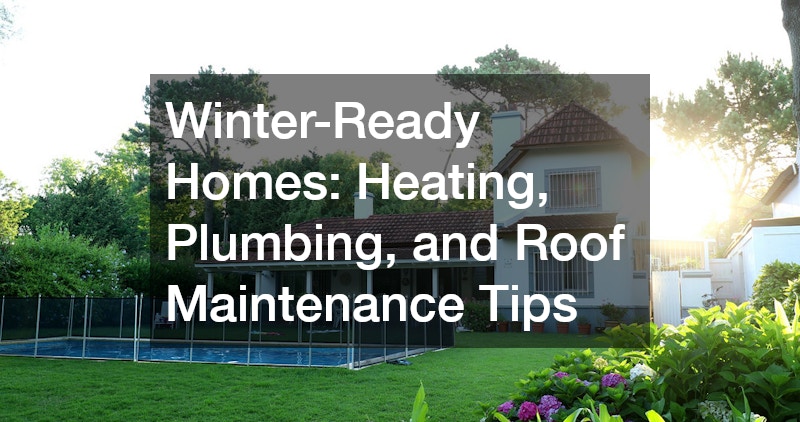
Winter brings with it a host of challenges for homeowners. Freezing temperatures, ice, and snow can wreak havoc on your property if you’re not adequately prepared. From frozen pipes and roof damage to heating system failures and poor indoor air quality, the potential for costly repairs increases significantly during the colder months. Preparing your home for winter is not just about comfort—it’s about safety, efficiency, and avoiding unexpected emergency expenses.
Many homeowners underestimate the impact of winter conditions on their home systems. Pipes that are not insulated properly can freeze and burst, leading to extensive water damage. Roofs that are not inspected can develop leaks from heavy snow or ice dams. Heating systems that haven’t been serviced may fail during a cold snap, leaving families exposed to unsafe temperatures. Even indoor air quality can deteriorate, leading to respiratory discomfort or aggravation of allergies.
Proactive maintenance can save homeowners substantial time, money, and stress. Regular inspections, timely tune-ups, and preventive measures ensure that your home remains safe, comfortable, and energy-efficient throughout the season. From heating systems to plumbing, roofing, and air quality improvements, taking a hands-on approach to winter preparation will give you peace of mind and help you avoid costly repairs.
This guide provides practical, actionable tips to prepare your home for winter. You’ll learn how to maintain your heating system, protect your plumbing, inspect and secure your roof, manage your water systems, improve indoor air quality, prepare for emergencies, and maximize energy efficiency. Following these recommendations will help you face winter confidently, keeping your family safe and your home functioning smoothly.
1. Preparing Your Heating System for Winter
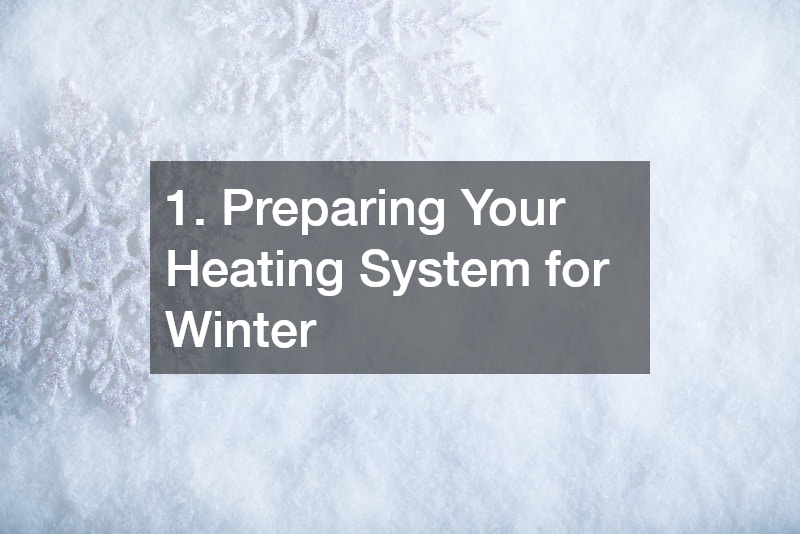
A properly maintained heating system is the backbone of a comfortable winter home. Neglecting your furnace, boiler, or oil burner can lead to inefficiency, higher energy bills, or even complete system failure during the coldest months. Scheduling inspections and performing seasonal tune-ups ensures that your heating system operates at peak performance.
Scheduling Inspections and Tune-Ups
Before temperatures drop, it’s crucial to have a professional inspect your heating system. An HVAC company can identify potential issues, such as worn components, soot buildup, or faulty thermostats, before they escalate into emergencies. If you rely on heating oil, track your oil delivery schedule and order early to avoid shortages when demand spikes. Some homeowners underestimate how quickly local suppliers can run out of heating oil during peak winter periods, making early delivery essential.
Checking Thermostats, Vents, and Ductwork
Thermostats should be tested for accuracy, and programmable models can be adjusted to optimize comfort and energy savings. Inspect vents and ducts for blockages, leaks, or dust accumulation. Leaky ductwork can lead to significant heat loss, forcing your system to work harder and increasing utility bills. Ensure that all registers are unobstructed by furniture or drapes to maintain even heat distribution.
Energy-Saving Adjustments
Small adjustments can yield big savings. Lowering the thermostat slightly when you’re away or sleeping can reduce energy consumption without sacrificing comfort. Replace or clean filters regularly; a clogged filter restricts airflow, reduces efficiency, and diminishes indoor air quality. For oil-fired systems, schedule your oil delivery ahead of time and confirm that the burner is functioning correctly to ensure uninterrupted heat throughout the winter.
Actionable Tips:
-
Track your oil delivery and schedule them to deliver heating oil early to avoid winter shortages.
-
Have your HVAC company inspect your furnace or oil burner before the first cold snap.
-
Clean or replace filters for optimal airflow and energy efficiency.
2. Ensuring Safe and Efficient Plumbing
Winter can be brutal on your plumbing, with frozen pipes, leaks, and water pressure issues presenting serious risks. Proper preparation protects your home from costly water damage and ensures uninterrupted water supply.
Inspecting Pipes for Leaks and Insulation Needs
Pipes exposed to cold air are especially vulnerable. Check for leaks, corrosion, and areas where insulation is missing. Insulate vulnerable pipes with foam sleeves or heat tape to prevent freezing. Pay particular attention to areas near exterior walls, basements, and attics.
Winterizing Outdoor Faucets and Irrigation Systems
Disconnect hoses and drain outdoor spigots to prevent freezing. Consider installing frost-free faucets if your property has frequent water supply issues. Irrigation systems should be fully drained or professionally winterized to avoid pipe bursts and costly repairs in spring.
Servicing Water Pumps
A properly functioning water pump is essential during winter, especially if you rely on well water. Test the pump for responsiveness and inspect pressure tanks for leaks. If your pump struggles to maintain adequate pressure, contact a plumbing company to prevent failures when water demand increases.
Actionable Tips:
-
Hire a plumbing company for annual maintenance and leak inspection.
-
Test and service your water pump before the coldest months.
-
Insulate exposed pipes and check for early signs of freezing.
3. Maintaining Your Roof for Winter Weather
Your roof bears the brunt of winter conditions. Heavy snow, ice dams, and frozen debris can compromise shingles, gutters, and roof structures. Regular inspections reduce the likelihood of leaks and structural damage.
Inspecting Shingles, Gutters, and Flashing
Check for cracked or missing shingles that could allow water penetration. Ensure flashing around chimneys and vents is intact. Clear gutters of leaves and debris to prevent ice dams, which can cause water to back up under shingles and lead to interior leaks.
Identifying Weak Spots
Look for sagging areas, uneven surfaces, or water stains on ceilings—these can indicate underlying issues. Pay attention to roof penetrations, such as skylights and vent pipes, which are prone to leaks.
Coordinating with HVAC Maintenance
Rooftop HVAC components, including exhaust vents or mini-splits, should be inspected and cleared of debris. Accumulated snow or ice can damage these systems and reduce their efficiency.
Actionable Tips:
-
Schedule a roofer inspection before the first heavy snowfall.
-
Ensure HVAC components on the roof are clear of debris.
-
Clean gutters and install ice dam prevention systems if necessary.
4. Winter-Ready Water Systems and Wells
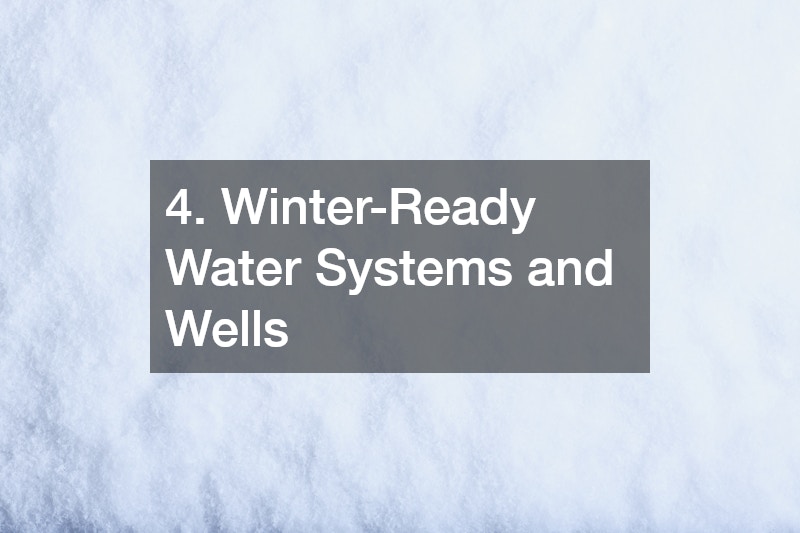
Homes with private wells or water systems require extra attention during winter to avoid frozen lines and service interruptions.
Inspecting Private Wells
Have a well service professional check pumps, pressure tanks, and electrical components before freezing temperatures arrive. Any worn wiring, motor issues, or leaks should be addressed promptly to ensure uninterrupted water supply.
Preventing Frozen Lines
Insulate exposed pipes, particularly those in basements, crawl spaces, or near the wellhead. Consider using heat tape or pipe insulation sleeves in areas prone to freezing. Maintain a slow trickle of water through vulnerable lines during extreme cold to prevent ice formation.
Choosing Reputable Water Well Companies
Partner with well service providers and water well companies who have experience with winter maintenance. They can provide comprehensive inspections, recommend upgrades, and advise on preventive measures tailored to your property.
Actionable Tips:
-
Schedule well service inspections before winter arrives.
-
Insulate exposed pipes and monitor basements for cold drafts.
-
Choose experienced water well companies for preventative maintenance and repairs.
5. Installing and Maintaining a Water Softener
Winter months can exacerbate mineral buildup in pipes and appliances, making a water softener a valuable addition.
Benefits of a New Water Softener
A new water softener reduces scale buildup, extending the life of plumbing and appliances. Soft water also improves heating efficiency, since mineral deposits in water heaters can reduce energy performance.
Winter Maintenance
Ensure salt levels in your softener are sufficient and that the system is functioning correctly. Prevent freezing in the softener tank by keeping it in a heated area or wrapping it with insulation. Regular maintenance from a qualified plumbing company ensures reliable operation throughout winter.
Actionable Tips:
-
Consult a plumbing company for installation or winter maintenance of your water softener.
-
Monitor salt levels and system settings to avoid freezing issues.
6. Improving Indoor Air Quality During Winter
Indoor air quality often declines during winter due to dry air, dust accumulation, and limited ventilation. Poor air quality can exacerbate allergies and respiratory issues.
Common Challenges
Cold temperatures lead to closed windows and reduced airflow, trapping dust and allergens indoors. Low humidity can irritate skin and respiratory passages, while heating systems can circulate contaminants.
Using Air Purification Systems
Professional inspection and cleaning of HVAC ducts can reduce airborne pollutants. Air purification systems, such as HEPA filters or UV sterilizers, help maintain cleaner air, while maintaining optimal humidity levels (30–50%) prevents dryness-related issues.
Actionable Tips:
-
Have HVAC companies inspect and clean ductwork regularly.
-
Install air purification systems or replace filters as needed.
-
Maintain proper humidity to reduce respiratory discomfort.
7. Emergency Preparedness for Winter Systems
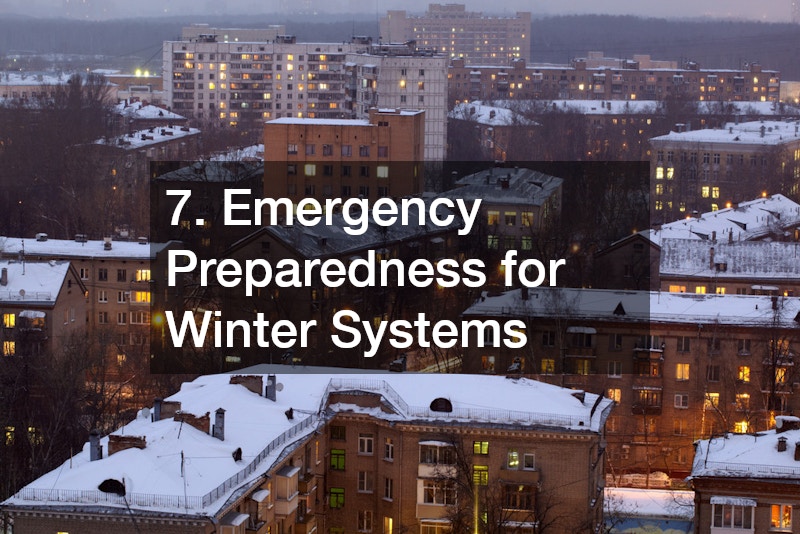
Even with thorough preparation, emergencies can occur. Having a plan in place ensures you can respond quickly to minimize damage and discomfort.
Creating a Winter Emergency Checklist
Keep a list of emergency contacts, including your plumbing company, HVAC company, and roofer. Know where to locate shut-off valves for water and fuel systems.
Stocking Essential Supplies
Maintain backup heating fuel, extra filters, pipe insulation, and basic tools. Check that water pumps are operational and that flashlights, batteries, and portable heaters are available.
DIY Troubleshooting
Familiarize yourself with minor fixes, such as resetting a tripped breaker on a water pump or temporarily insulating a frozen pipe. This knowledge can prevent minor problems from becoming major issues before professional help arrives.
Actionable Tips:
-
Keep contact information for service providers handy.
-
Ensure backup heating fuel and operational water pumps.
-
Prepare a DIY troubleshooting guide for minor emergencies.
8. Energy Efficiency and Cost-Saving Tips for Winter
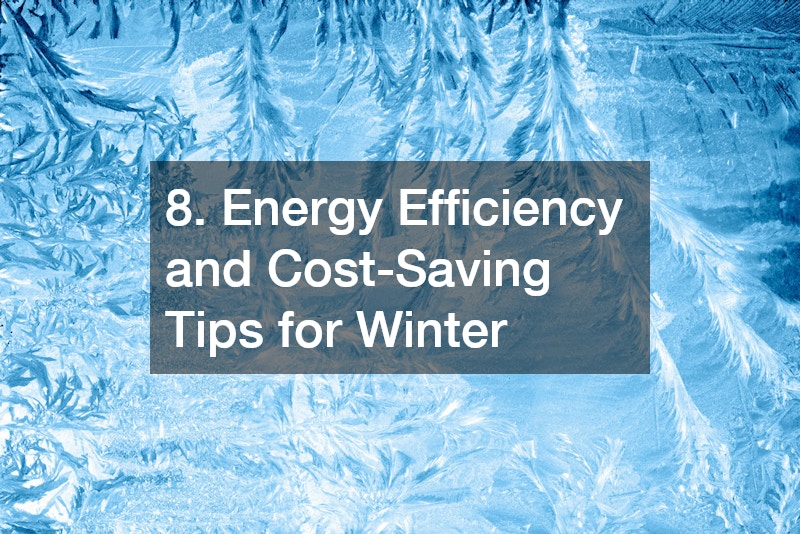
Winter preparation is not only about safety but also about energy efficiency. Optimizing systems can significantly reduce utility bills.
Reducing Heating Bills
Use programmable thermostats, seal leaks around windows and doors, and add insulation to maintain warmth. Combining these strategies with well-maintained heating systems maximizes efficiency.
System Upgrades
Timely oil delivery ensures better pricing and uninterrupted fuel supply. Installing or maintaining a new water softener reduces scale, improving heating system efficiency and prolonging appliance life. Upgrading appliances and components to energy-efficient models further reduces costs.
Actionable Tips:
-
Schedule oil delivery early to take advantage of seasonal pricing.
-
Upgrade systems, including water softeners, to prevent scale buildup.
-
Seal drafts around doors, windows, and rooflines to conserve heat.
Preparing your home for winter is an investment in safety, comfort, and long-term savings. By proactively maintaining heating systems, plumbing, roofing, water systems, and indoor air quality, you can prevent emergencies, reduce energy bills, and enjoy a comfortable home environment despite harsh weather conditions.
Professional inspections and seasonal tune-ups, paired with practical DIY measures, ensure that your home is equipped to handle freezing temperatures, heavy snowfall, and other winter challenges. Tracking oil delivery, servicing water pumps, installing water softeners, cleaning gutters, and optimizing indoor air quality are all critical steps toward a winter-ready home.
By following the actionable tips shared in this guide, homeowners can face winter with confidence, knowing their home is safe, efficient, and prepared for whatever the season may bring. Taking these steps not only safeguards your property but also enhances energy efficiency, reduces repair costs, and ensures that your family remains comfortable throughout the winter months. Winter preparation is not just maintenance—it’s peace of mind.
